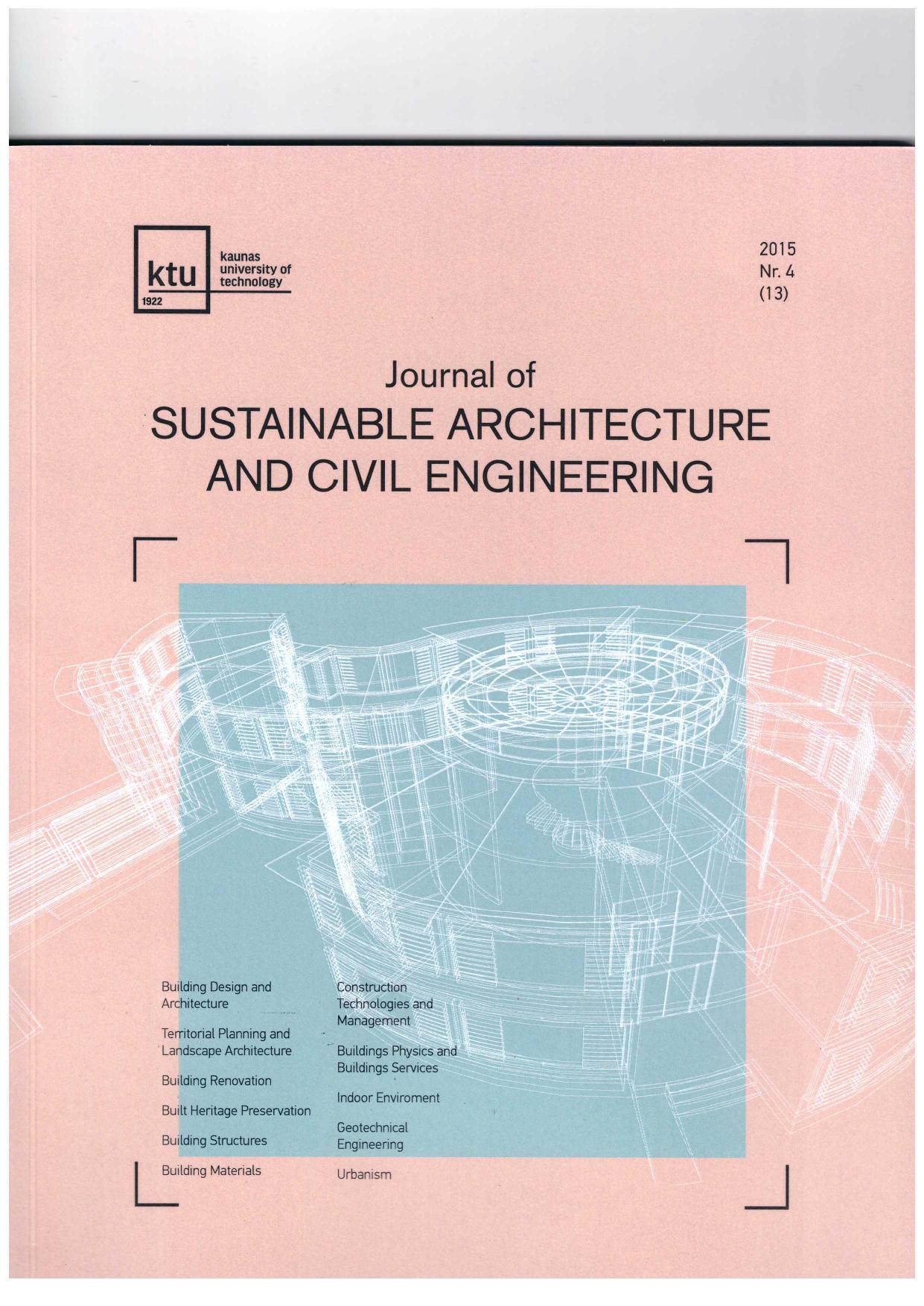The Comparison of a Numerical and Empirical Calculation of Thermal Transmittance of Ventilated Facade with Different Heat-Conductive Connections
The Comparison of a Numerical and Empirical Calculation of Thermal Transmittance of Ventilated Facade with Different Heat-Conductive Connections
Author(s): Raimondas Bliūdžius, Aurelija Levinskytė, Robertas KapačiūnasSubject(s): Architecture, Energy and Environmental Studies, Evaluation research
Published by: Exeley Inc.
Keywords: heat-conductive connections; point thermal bridges; thermal insulation; ventilated facade systems;
Summary/Abstract: The energy efficient buildings are priority these days. The building energy efficiency requirements are increasing and thicker thermal insulation layer is used for building envelopes in order to achieve these high requirements. Ventilated facades are often used for the construction of public buildings, whose thermal insulating layers are crossed with connections made from steel or aluminium alloy, whose influence on the heat transfer through the construction is high. Looking for less heat-conductive materials for connections, it has been observed that different calculation methods give different results of heat transfer, depending on characteristics of materials for thermal insulation and connections. In order to find out the reasons for these differences, calculations of ventilated walls with various connections were carried out. The heat transfer through the wall with connections crossing thermal insulating layer could be calculated in two ways. The first way is simpler and was often used earlier - this is the calculation of the heat transfer coefficient increase depending on type and geometry of connection using the formulas presented in the standards. A more precise calculation method is the calculation of the heat transfer coefficient of wall with connections using two - dimensional and three - dimensional heat transfer modelling computer software (heat flow analyses).
Journal: Journal of Sustainable Architecture and Civil Engineering
- Issue Year: 23/2018
- Issue No: 2
- Page Range: 39-48
- Page Count: 10
- Language: English

